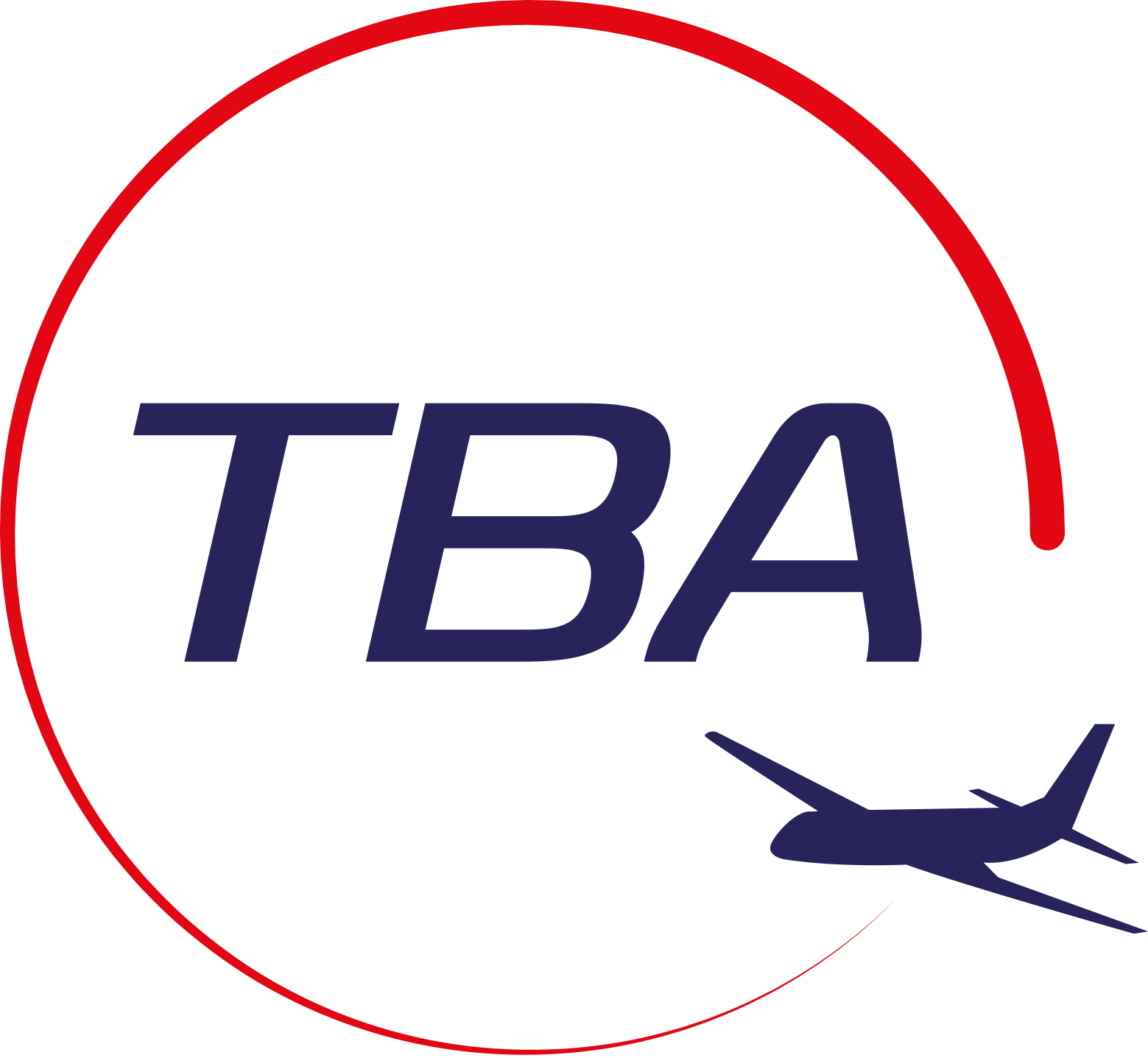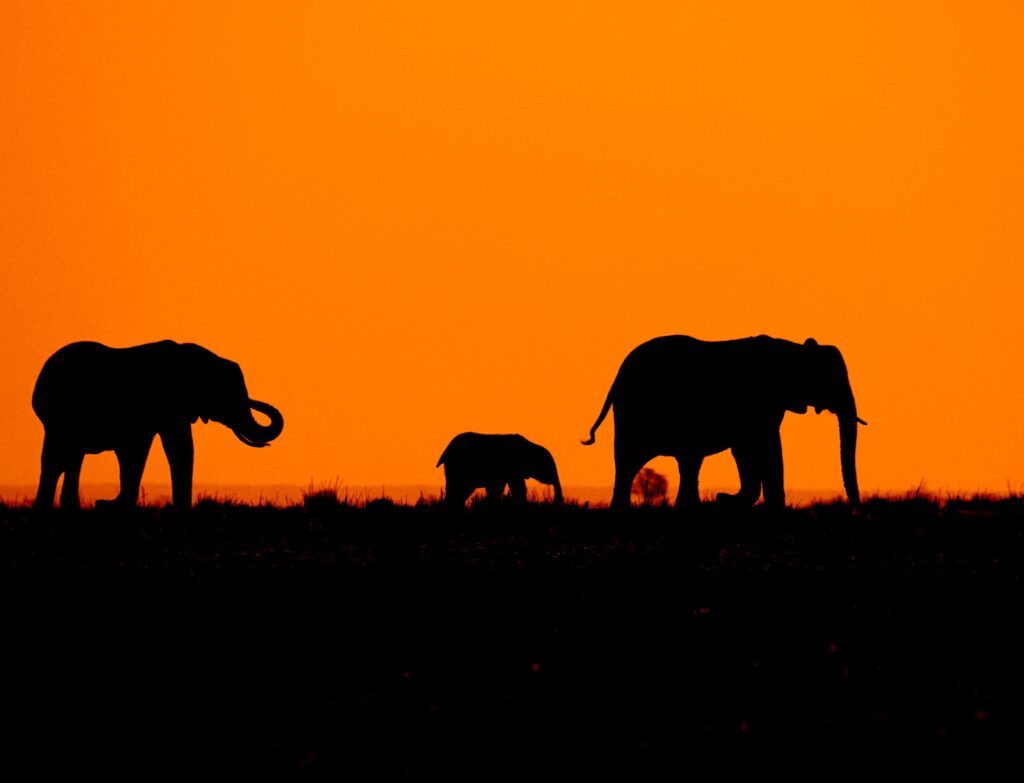
Research and knowledge is the first step for Botswana Travel Business Assistance. Here is a fact file for Botswana to get you started. Contact us if you are looking to start a business in or expand your market to Botswana. We have consultants ready to help you on the ground in Botswana.
Take the stress out of international business travel. Book your free consultation now!
Basic Facts on Botswana
Origin of the name:
It means “place of the Tswana people” in the Tswana language, from the locative prefix bo- combined with the name of Tswana people, itself of uncertain origin, possibly from tswa “to go out” or tshwana “to resemble”. During the British colonial period, the region was called Bechuanaland, which was more accurately rendered as Botswana when the country achieved independence in 1966. The majority of people in Botswana are of the
Tswana ethnic group with the predominant language of the country, has been referred to as Setswana.
History:
The people known nowadays as the bushmen, Basarwa, Khoisan, or the San people, are the original inhabitants of Botswana. They were nomadic hunters and gatherers. About 7000 years ago, the Bantu people from central Africa started their migration and filtered south, east, and west. Eventually, they crossed the Zambezi River and some settled in Botswana, which now has about 20 different languages. During the late 1800’s, tensions between the people of Botswana and the Ndebele encroaching from the Kalahari, and then later the Boer settlers from the Transvaal region (in South Africa), forced the Batswana leaders to seek assistance and protection from the British Government. It was then that the Bechuanaland Protectorate came about. Soon afterward (in 1885), it was declared a British Territory and became British Bechuanaland. The British government regarded the protectorate as a temporary expedient until it could be handed over to Rhodesia or, after 1910, to the new Union of South Africa. From the late 1950s, it became clear that Bechuanaland could no longer be handed over to South Africa and must be developed toward political and economic self-sufficiency. Bechuanaland became self-governing in 1965, under an elected BDP government with Seretse Khama as prime minister. In 1966 the country became the Republic of Botswana, with Seretse Khama as its first president.
Government: Under the 1965 Constitution, Botswana is a republic with an executive president chosen by the National Assembly for the concurrent five-year term. After the 2004 general election, the Assembly had 57 members elected by universal adult suffrage plus four members nominated by the president. The 35-member Ntloy Dikgosi (formerly known as the House of Chiefs) advises on ethnic matters. Thirty of these members are elected by senior tribal authorities and the remaining five are appointed by the president.
Official Language: The official languages of Botswana are English and Tswana.
- English: Inherited from colonial rule and is
used for official business and most written communication. - Setswana: The language of the Tswana people is the
country’s national language, and is spoken by most of the population.
Indigenous Languages: Other languages are spoken in Botswana. Over 90% of the population speak a Bantu
language as their first language. The most common Bantu languages spoken are Setswana (73.3% of the population), Kalanga (17.2%), Kgalagadi (2.4%), Shona (1%) Mbukushu (1.6%) and Ndebele (1%). 1.7% speak Tshwa (a Khoe language) and
0.1% speak ! Xóõ, a Tuu language (both non-Bantu). English is spoken by 2.8% as their first language, and a small number speak Afrikaans.
Population: The Botswana population estimates are 2,417,596 inhabitants (2023 estimates). Botswana is the 145th most populated nation in the world, and the 42th most populous in Africa. Botswana is one of the most sparsely populated countries in the world. Semi-desert conditions account for about 84% of the country’s land area. Due to the harsh climatic conditions and the severity of the desert environment in the western part of Botswana, population density in that part of the country is very low.
Time Zone: Botswana currently observes Central Africa Time (CAT). Central Africa Time is consistent with UTC +2. The Central Africa Time does not have an associated daylight-saving time. The Central Africa Time applies to 11 countries: Botswana, Burundi, Democratic Republic of the Congo (Partly), Malawi, Mozambique, Namibia, Rwanda, South Sudan, Sudan, Zambia,
Zimbabwe.
Climate: Three-quarters of the Botswana land surface is covered by the Kalahari sands. Overall, the country is arid to semi-arid with highly erratic rainfall. Botswana’s climate is determined by its inland location, astride the subtropical high-pressure belt. During the summer months (November to March) the Inter-Tropical Convergence Zone (ITCZ) brings moisture to the northern areas and becomes progressively drier towards the country’s western areas. The mean annual rainfall ranges from over 650 mm in the northeast to less than 250 mm in the southwest; annual rainfall covers a range from 620 mm in the northern Kasane area to 300 mm in the southwestern Tsabong area. The national average rainfall is 475 mm per year. Most rain occurs in the months from October to April and falls as localized showers or thunderstorms. Temperatures in the country are
generally warm to hot, with mean monthly maximum temperatures ranging from 29.5ºC to 35ºC summer, and 19.8ºC to 28.9ºC in winter. Mean monthly minimum temperatures range from 14.6ºC to 20.8ºC in summer and 2.9ºC to 11.6ºC in winter.
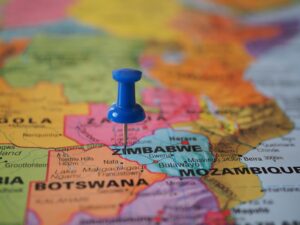 Borders: Botswana’s neighboring countries are Zambia to the North; Namibia to the West and North; Zimbabwe to the East; and South Africa to the South and South East. Botswana is a landlocked country and thus has no access to sea or ocean.
Borders: Botswana’s neighboring countries are Zambia to the North; Namibia to the West and North; Zimbabwe to the East; and South Africa to the South and South East. Botswana is a landlocked country and thus has no access to sea or ocean.
Size: The Total Botswana area is about 581,730 sq km of which land: is 566,730 sq km and water is 15,000 sq km. Botswana is slightly smaller than Texas, or slightly larger than France.
Religion: Christianity is the largest religion in Botswana, according to the country’s 2011 census, 79% of the population are members of Christian groups. However, the country is officially secular and allows freedom of religious practice. Christianity arrived in Botswana in mid 1870s, with the arrival of European missionaries. The conversion process was quicker than in neighboring southern African countries because regional hereditary tribal chiefs locally called Dikgosi converted to Christianity, which triggered the entire group they led to convert as well. Before the arrival of Christianity, Animism was the prevailing belief system of the country.
Currency: The pula (also known as the Botswana dollar) is the currency of Botswana. It has the ISO 4217 code BWP and is subdivided into 100 thebe. Pula means “rain” in Setswana because rain is very scarce in Botswana. A sub-unit of the currency is known as thebe, or “shield”, and represents defense. The names were picked with the help of the public.
The banknotes family includes five notes in a denomination structure comprising P10, P20, P50, P100 and P200.
Five coins are issued in denominations of 1t, 5t, 10t, 25t and 50t. Over the years, the government introduced higher-value notes and coins, such as P1 and P2 coins, owing to their more frequent use.
The current exchange rate is 13.7609 Botswana Pula to 1 US Dollar, or 16.8162 Botswana Pula to 1 Great British Pound (11 November 2023).
https://www.oanda.com/currency-converter/en/?from=BWP&to=USD&amount=13.7609
https://www.oanda.com/currency-converter/en/?from=BWP&to=GBP&amount=16.8162
Historical Key Events
Precolonial & colonial Era
· Researchers reported that Botswana was likely the region where modern humans first developed about 200,000-300,000 years ago.
· The Tsodilo Hills site in northwest Botswana has been continuously inhabited since 17,000 BC. The forebears of today’s Khoe-Kwadi, Kx’a, and Tuu-speaking peoples (“Khoisan”) are thought to have lived in the area now corresponding to Botswana for many thousands of years.
· Sometime between 200 and 500 AD, the Bantu-speaking people who were living in the Katanga area (today part of the DRC and Zambia) crossed the Limpopo River, entering the area today known as South Africa as part of the Bantu expansion.
· 1867 – European gold prospectors arrive, and mining begins. In 1885, the British proclaimed a protectorate called Bechuanaland.
· 1950 – Chief of the Ngwato, Seretse Khama, is deposed and exiled by the British.
· 1960 – Britain approves new constitution for Bechuanaland. Executive Council, Legislative Council, and African Council are established. The following year, Seretse Khama was appointed to the Executive Council and later founded the Bechuanaland Democratic Party (BDP), which was eventually renamed the Botswana Democratic Party. He became prime minister in 1965.
· 1965 – Gaborone becomes an administrative center.
· 1965 – BDP wins legislative elections, the first to be held under universal adult suffrage. Seretse Khama becomes prime minister.
Independence
· 1966 – Bechuanaland is granted independence and becomes the Republic of Botswana with Seretse Khama as president.
· 1967- Diamonds discovered at Orapa.
· 1980 – President Seretse Khama dies. Quett Masire, the former vice-president, is made president after the National Assembly vote.
· 1984 September – General elections: BDP wins a majority, Quett Masire is re-elected as president.
· 1989 October – General elections; BDP wins majority. National Assembly re-elects Masire as president.
· 1991 – 12,000 public sector workers sacked after strike action calling for increased wages.
· 1994 October – Legislative elections: BDP secures 53% of the vote. Masire was re-elected by the National Assembly.
· 1997 – Constitutional amendments approved. The presidency is limited to two five-year terms. The voting age was lowered from 21 to 18.
· 1998 March/April – Masire resigns as president and retires. Festus Mogae, formerly vice president, becomes president under new constitutional arrangements.
· 1999-2008 – Presidency of Festus Mogae – praised for diversifying Botswana’s economy to reduce its dependence on diamonds.
· 2004 October – President Mogae secures a second term in a landslide election victory.
· 2008 – Ian Khama, son of Seretse Khama, becomes president, and serves two terms in office.
· 2009 October – The ruling BDP party wins elections and another 5-year term for President Khama.
· 2010 – Human rights group Survival International calls for a boycott of Botswanan diamonds, accusing the government of trying to force Basarwa bushmen away from their ancestral lands.
· 2014 October – Ruling Botswana Democratic Party (BDP) wins the general elections with 33 of the 57 seats, giving Ian Khama a second term as president.
· 2018 April – Mokgweetsi Masisi becomes president and leader of the governing Botswana Democratic Party.
Botswana Food
Botswana’s vast flatlands are home to around 2.3 million people, with most belonging to the Tswana ethnic group. The San, a minority, are considered the first inhabitants of Southern Africa and still follow a hunter-gatherer lifestyle. In the warm and dry climate, Batswana enjoy a diet rich in meat, starches, grains, and native plants. As a former British protectorate until 1966, Botswana’s cuisine has been influenced by British tastes while staying true to its roots. Let’s take a look now at an assortment of foods relished by the Batswana people.
Seswaa: Meat, specifically beef, plays a vital role in Tswana culture; it is present at all types of gatherings and is served in a variety of ways. One popular way that it is served all around the country is Seswaa, which is slow-cooked beef.
Mogatla meaning “oxtail” in Setswana, is a stew that is savored all across Botswana. It could be regarded as a national comfort food because of its deep ties with Botswana’s culture. Oxtail can take longer to cook, but once the juices and flavors of tomatoes, onions, broth, and bay leaves have been absorbed, the result is a delicious stew that is devoured in a matter of moments.
Bogobe is made out of powdered millet or sorghum and
cooked in boiling water. Varieties include Bogobe Jwa Lerotse, which is made by incorporating a Lerotse melon into the sorghum mix. When eaten raw, a Lerotse melon tastes similar to a cucumber, and it gives the Bogobe its famous light-orange skin, which is a crowd-pleaser at weddings.
Diphaphatha are stove-top muffins, similar to English muffins, and are known for their distinctive browning on both sides. They are traditionally cooked in cast-iron pans over an open flame and are enjoyed with fillings both sweet and savory at any time of the day.
Motogo Also known as “slap pap” for its pouring consistency, Motogo is the Setswana name for soft porridge, commonly eaten at breakfast. To make it, a small amount of sorghum and millet powder are stirred steadily with boiling water to avoid lumps until the mixture begins to thicken and bubble.
Leleme: In Tswana tradition, cow tongue is prepared like other meats, but there’s a twist – it’s believed that only women should
eat it because Tswana women are known for talking a lot! Although there’s no proof that cow tongue can cure talkativeness, Batswana still love the warm and delicate taste of roasted beef tongue.
Dibete means “livers” in Setswana. Both chicken and beef livers are thoroughly enjoyed and accompany many carbs. Not only are
livers packed with nutrients, but they also make for a great stew which is often devoured with Phaletshe or steamed bread.
Maphutsi means “squashes” (both butternut and pumpkin),
and they are successfully grown and harvested on the parched soil of most rural homesteads. They are cut into chunks and steamed, then lightly seasoned and served along with a carb and meat.
Matemekwane consists of flavorful dumplings seasoned with herbs and spices, often served with dips and soups. They can also be filled with meat or vegetables, folded, and then fried until golden. With their remarkable taste and delicate size, it’s no surprise they are a favorite among many!
Morogo: An indigenous vegetable found on many plates is Morogo. Its dark green textured leaves make it easy to identify, and it comes in several varieties that differ in taste. The most commonly eaten type of Morogo is Morogo Wa Dinawa. It is available in retail stores but can be easily grown in one’s backyard.
Things to see and do in Botswana
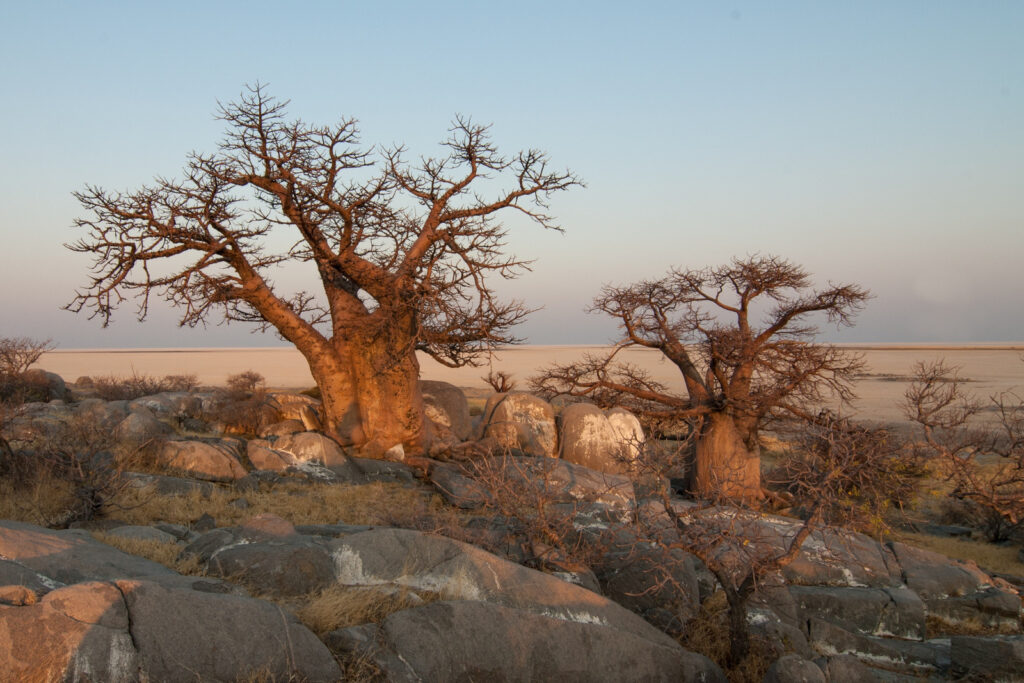
Botswana is famous for its remarkable wilderness areas. The Okavango Delta and Chobe National Park – along with some seriously fancy luxury lodges – make it one of the best destinations in Africa for wildlife lovers. The country is a unique playground for amateur anglers and birdwatching enthusiasts, too. It also offers fun experiences for culture-seekers and outdoorsy adventurers. The stark Kalahari Desert covers much of Botswana, providing an unorthodox stage for an African safari. At first, the desert might seem lifeless and uninhabited, but the dry plains play host to unusual delights that make for a magical travel experience: endless salt pans, ephemeral lakes, islands of baobab trees, friendly meerkat colonies, Neolithic sites that speak to a fascinating past and an oasis of epic proportions in the form of the world’s largest inland delta. Despite being covered by large areas of desert, the miracle of water truly sets this country apart. Fed by rains from the mountainous watersheds of Angola, the life-fueling annual floods create exquisite river systems and replenish the Okavango Delta for extraordinarily diverse wildlife. Whether your tastes run to wildlife encounters or elemental desert scenery, plan your trip to include these unmissable experiences in Botswana.
Okavango Delta: The largest inland delta in the world, the Okavango Delta is the most unexpected wonder – water present in a desert. The broad Okavango River sinks into the dry sands of the Kalahari Desert, creating a lush and waterlogged oasis with crystal clear lagoons and channels, reeded islands, and fertile floodplains. Dubbed “the river that never finds the sea”, this magical oasis spreads over more than 15 500 km². Okavango Delta was registered as a World Heritage Site by UNESCO in 2014 for its exceptionally intact wetland system and its rich and diverse biodiversity.
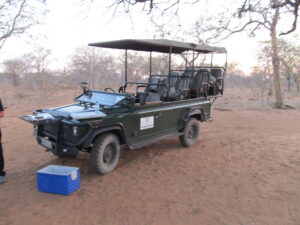
Chobe National Park: Situated in the north of the country, it is Botswana’s most visited wildlife sanctuary. The name comes from the Chobe River which forms a natural boundary between Botswana and the Caprivi Strip in Namibia. The river is the lifeblood of the park, providing a year-round supply of water to the park’s thriving
The Guu Tjilenje Cultural Festival is an event that takes place in Botswana’s northeastern regional town of Nlapkhwane. It is held every year in May. Ancient games, dances, music, and stalls selling local food and drink make up this traditional event. The cultural festival attracts many people, especially the Bakalanga people, mostly from villages in the vicinity of Tutume such as Senete, Nkange, and Marobela.
Botswana Arts and Crafts: Botswana baskets are widely regarded as some of the finest in Africa, and certainly the best in southern Africa. Their high quality, outstanding partisanship, and originality have gained them international recognition, with exports to many countries around the world. The baskets are made of the mokolwane palm (Hyphaene petersiana), which is cut and boiled in natural earth-tone coloring. The lemon (in Setswana) is the main instrument used to make the baskets.
Maitisong Festival is held in Gaborone annually in March. The festival includes traditional music, dance, and theatre. The celebration lasts nine days and sees the entire city in carnival mode. There are several venues around Gaborone where international and local artists perform theatre, music, dance, slam poetry, and comedy. Venues throughout Gaborone host the event. Maru-a-Pula School and Maitisong remain the home of the festival and play host to the opening and closing. This celebration promotes art, raises the professional bar in the theatre, and connects Botswana artists with their international counterparts.
Manyana Rock Paintings. Perhaps the most visited rock painting site in the Gaborone area, the paintings are spread over five separate areas of the rock cliff face. Images include giraffes, antelope, human figures, and geometric designs, all of which date from between 1100 and 1700 AD. They were in all likelihood made by Khoe (click-speaking) herders.
Botswana National Museum: Nestled in the capital city of Gaborone, the Botswana National Museum is a multifaceted institution that brings together the National Art Gallery, Octagon Gallery, and, since November 2007, the National Botanical Garden. This establishment showcases an impressive collection of traditional Botswana crafts, paintings, and artifacts, placing the spotlight on the remarkable talents of local artists.
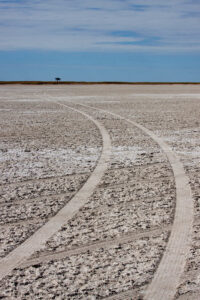 Makgadikgadi Salt Pans: One of the “must-do” activities when visiting the Salt Pans region of Botswana is going quad biking and camping. The landscape here is perfect for it, as there are no obstacles or difficult terrain. Many of the camps around the Salt Pans offer quad biking excursions, either as day trips or overnight trips to Kubu Island. Kubu Island is a unique geological feature that stands out in this flat and desolate land.
Makgadikgadi Salt Pans: One of the “must-do” activities when visiting the Salt Pans region of Botswana is going quad biking and camping. The landscape here is perfect for it, as there are no obstacles or difficult terrain. Many of the camps around the Salt Pans offer quad biking excursions, either as day trips or overnight trips to Kubu Island. Kubu Island is a unique geological feature that stands out in this flat and desolate land.
The Economy of Botswana
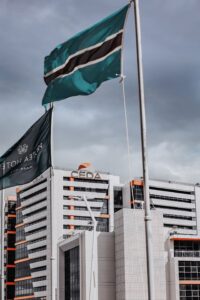
Botswana has historically enjoyed robust and stable growth since its independence in 1966. The country’s stable growth has been supported by the discovery of large diamond deposits and the prudent use of the proceeds. Over the years, the government has invested the returns from diamond mining into education, health, and infrastructure, and it is among the most developed countries in Africa. Botswana’s mining industry continues to be one of the best and most lucrative in the world, especially diamond mining. Compared to other sectors, the mining sector remains the dominant one in the economy. It is the largest contributor to the GDP and government revenues and the source of the large majority of export earnings.
Tourism is another important sector of the economy, which represents the second largest activity in Botswana in terms of the GDP, after mining. Tourism contributes about 13% of Botswana’s GDP. On the jobs side, travel and tourism account for nearly 9% of total employment in the country, with principal tourist attractions being game reserves, wildlife, and wilderness. Other important service sectors are wholesale retail, and construction. At the same time, the agricultural sector’s contribution has decreased significantly over the years. The process of economic diversification was partly initiated, but it is still insufficiently achieved. To lessen the excessive dependence on the diamond sector, the Ministry of Energy of Botswana has encouraged the exploration and exploitation of nondiamond minerals to diversify the mining sector. Other minerals are thus mined, such as nickel copper, coal, sodium carbonate, gold, silver, semiprecious stones, and granite.
Botswana also has untapped uranium, lead, and zinc reserves, that companies are seeking to exploit. In addition, there are also important mining-related subsectors that should be encouraged and could be developed, creating jobs, such as mining equipment, services, base metal processing, exploration, and mining consulting.
Doing Business in Botswana
Ease of Doing Business Index Scores
Overall score: 66.2 (2020)
Starting a business score: 76.2 (2020)
Trading across Borders score: 86.7 (2020)
Enforcing Contracts score: 50.0 (2020)
Legal System: The origins of modern law in Botswana date back to the founding of the Bechuanaland Protectorate. The common law that is enforced today was based on the Roman-Dutch law received from Holland and introduced into the Protectorate through the Cape Colony (modern-day South Africa). Botswana is considered one of the most stable democracies in Africa and the judiciary is relatively independent. The language of Justice in Botswana is English and Setswana, Courts provide interpretation services in English and Setswana. The right to equal treatment is protected by Section 3 of the Constitution. The article prohibits all forms of discrimination based on race, place of origin, political opinions, color, creed, or sex.
Company creation procedures:
- Reserve a unique company name at the Companies and Intellectual Property Authority
- Sign the declaration of compliance with statutory requirements for incorporation before a commissioner for oaths or company representative
- Register the company at the Registrar of Companies, Ministry of Trade and Industry
- Receive inspection of company premises from the Industrial Affairs Department, Ministry of Trade and Industry
- Obtain an industrial license from the Industrial Affairs Department, Ministry of Trade and Industry; or obtain a trade license from the Gaborone City Council
- Open a bank account
- Obtain a Tax Identification Number (TIN) from the Botswana United Revenue Services
- Register for VAT at the Department of Customs & Excise of the Botswana United Revenue Services (BURS)
- Register employees for workplace injury insurance
Botswana Investment and Trade Center (BITC)
The Botswana Investment and Trade Centre (BITC) is Botswana’s trade promotion agency to attract investment and assist foreign investors with doing business in Botswana. Botswana offers low tax rates and has no foreign exchange controls. The BITC’s topline economic goals are to promote export-led growth, ensure efficient government spending and financing, build human capital, and ensure the provision of appropriate infrastructure. Government of Botswana entities, including BITC, use these criteria to determine the level of support to give foreign investors. Botswana Investment and Trade Centre (BITC) is an integrated Investment and Trade Promotion Authority with an encompassing mandate of investment promotion and attraction; export promotion and development including management of the Nation’s Brand. BITC provides the following services;
- Company and Business Registration
- Trade and Business License Applications
- Entry visas, work, and residence permits
- Work Permit Exemptions
- Connection of utilities e.g. Power, telecommunications, and water
- Income tax and VAT registration
- Access to Industrial and Commercial land
- Facilitation of construction permits
- Allocation of BITC factory space (subject to availability)
- Environmental Impact Assessment (EIA) Compliance
- Provision of information on the Botswana business climate, regulatory regime, and investment opportunities
- Opening a Bank Account
Why invest in Botswana?
- Botswana is stable, peaceful, and transparent.
o Botswana provides a peaceful and stable environment to its citizens and investors and has maintained peace since its Independence in 1966
o Botswana has zero tolerance for corruption, boasts a sound legal system, and adheres to the rule of law
o Botswana has been consistently rated as the second least corrupt country in Africa by Transparency International.
- Botswana is committed to sound fiscal policy, and economic freedom and has a steady and dramatic growth rate.
o Botswana has the highest sovereign credit rating in Africa by Standards and Poor Global Ratings (2021)
o Botswana is named the 3rd freest economy in Africa by the Heritage Foundation (2022)
- Botswana opens the door to a massive market through FTAS
o Botswana provides investors with preferential access to the Southern African Development Community’s (SADC) entire marketplace – over 393 million people
o Botswana provides duty-free access to South Africa, Namibia, Lesotho and eSwatini
o Botswana provides duty-free and quota-free access to the European Union (EU) market.
- Botswana is committed to continued growth
o Botswana is consistently investing in new and improved core infrastructure such as power plants, fiber-optic networks, roads, railways, and international banking institutions
o Botswana is establishing itself as a center for Innovation and Research and Development (R&D) via the Botswana Innovation Hub.
- The Government wants to make your investment work for you
o Botswana has no foreign exchange controls or restrictions on business ownership
o Taxes are very low
§ 15% for manufacturing and International Finance Service Centre (IFSC) companies,
§ 22% for other businesses and 25% for individuals
o We allow remittance and full repatriation of profits and dividends
Investment Opportunities:
Strategic Centers of Excellence have been established for the key sectors of the economy to serve as information centers and drive the promotion of investment opportunities. These include,
- Diamond Hub
- Education Hub
- Innovation Hub
- Transport Hub
- Agriculture Hub
Some of the investment opportunities are:
- Minerals Sector: Base metals i.e. gold, uranium, copper, nickel, coal, manganese and Mining services.
- Diamonds: cutting and polishing, jewelry manufacturing, and diamond-related services.
- Education Sector: provision of specialty training institutions for skills and development.
- Services Sector: ICT, Data Processing, Financial Services, Tourism, Health.
- Energy Sector: Power generation, extraction of coal bed methane, and renewable energy projects including solar PV plants and solar power generators as well as bio-fuel projects.
- Agriculture: primary production and agro-processing.
- Resource-Based Industries: Glass manufacturing, Leather and Leather by-products manufacturing, beef and beef by-products, agro-processing, dairy farming, diamond beneficiation.
- Infrastructure: Transportation and logistics
Flagship Projects in Botswana
Sir Seretse Khama International Airport (SSKIA) Special Economic Zone is a world-class special economic zone and the flagship of the country’s Special Economic Zones. An Airport City development is earmarked for this zone. It is investor-friendly and ecologically sustainable. This attractive international investment location has been designated as a mixed zone primarily focusing on the following sectors: Diamond Beneficiation (Diamond Polishing, Jewellery), Specialist Automotive, Aerospace and Aviation, Cargo, Freight and Logistics, Pharmaceutical and Medical Devices, Engineering and Electronic Equipment, Plastics – Injection Moulding, Agro-processing. The zone is strategically located for business, adjacent to Botswana’s largest airport, the Sir Seretse Khama International Airport. The airport links the zone to international destinations and markets.
Health Information for Travel to Botswana
 Yellow fever vaccination certificate is required for travelers aged 1 year or over arriving from or having transited through a country with a risk of yellow fever transmission.
Yellow fever vaccination certificate is required for travelers aged 1 year or over arriving from or having transited through a country with a risk of yellow fever transmission.
It is strongly recommended that you visit a travel vaccination clinic and get other vaccinations.
COVID-19
As of 28th September 2022, all Covid protocols for arrival or departure from Botswana have been dropped.
Botswana Immigration
A passport from an eligible country valid for at least 6 months validity from the intended date of arrival is required for travel to Botswana.
Botswana, through the Ministry of Labour and Home Affairs, has launched an online visa application platform. To facilitate the ease of doing business, the Government of Botswana has decided to move from a manual to a virtual platform to enhance convenience and efficiency in visa services.
To access the online visa platform, click this link: https://evisa.gov.bw
Many European and North American countries including US and UK do not require a visa to enter Botswana.
Interesting Facts About Botswana
The 135-meter-long (443 foot) boundary between Botswana and Zambia is the shortest land boundary in the world. The Botswana–Zambia border connects two tripoints on the Zambezi River, one with Namibia in the northwest to one with Zimbabwe in the southeast. This incredibly short land boundary on the Zambezi River is also known as the quadripoint area. The double tripoints were made while the nations were under colonial rule, and while all four of the other boundaries received official delimitations, the Botswana–Zambia frontier has never been formally agreed upon. Botswana and Zambia have not revisited their boundary delimitation since independence, and the two States maintain good political relations.
Diamonds: Botswana is the world’s biggest diamond-producing country in terms of value, and the second biggest in terms of production. The Jwaneng Diamond Mine situated in the south of Botswana is the richest in terms of value, it has produced the third-largest gem-quality diamond ever found. In the world. Jwaneng, which means “a place of small stones” is located in the Naledi River Valley of southern Botswana, the Jwaneng pipe was first discovered in 1972, and became fully operational a decade later.
Botswana Travel Business Assistance
Are you planning to move your business to Botswana or open up Botswana as a new market? Perhaps there is a conference in Botswana you need to attend and you need some help. We are here for your Botswana Travel business assistance.
